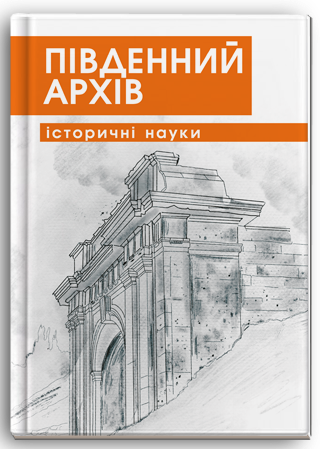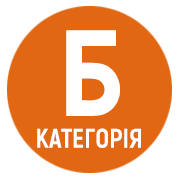FEATURES OF FORMING THE OFFICER CORPS OF THE RED ARMY IN THE 1920S-1930S
DOI:
https://doi.org/10.32999/ksu2786-5118/2024-47-7Keywords:
The Red Army, the Workers’ and Peasants’ Red Army (WPRA), officer corps, command staff, officers, education system, military construction.Abstract
Purpose of the research consists in a thorough analyzing the process of establishment of such an important branch of the armed forces as the officer corps. The scientific exploration covers the period from the founding of the Red Army until the onset of mass repressions in 1937 and is aimed at highlighting the peculiarities of military personnel training in educational institutions and courses, analyzing state strategies for forming the army’s upper echelon by engaging various population groups in service, and analyzing the outcomes of such a policy of officer corps formation on the eve of World War II. The methodological basis of the work consists of two groups of methods: general scientific methods – analysis, synthesis, generalization and special-historical methods – method of periodization, historical-systemic method and historical-genetic method. Results. The army of the former Russian Empire was exhausted by participation in the First World War, and after the October revolution of 1917 it was structurally destroyed. Soldiers’ committees, election of commanders, and destruction of the officer layer led to the formation of a new type of army within the borders of Soviet Russia, and then within the USSR; this army had to correspond to the declared Bolshevik slogans: to be staffed voluntarily by politically reliable people from the worker-peasant environment, without professing the ideals of the “old” army. However, it should be noted that the proposed ideas were populist slogans but could not be fully implemented, especially considering the anarchic situation in the territories of the former Russian Empire. Destruction of the existing orders led to anarchy and disorganization in the military sphere, and the lack of competent military chiefs surrounded by Bolshevik leaders led to inconsistent and unsystematic reform measures. After L.D. Trotsky became the head of the People’s Commissariat of Defense, the systematic construction of the Red Army began. L.D. Trotsky’s reforms brought former tsarist officers back into the ranks of the army, who could become a center of resistance to the Bolshevik government. In order to eliminate this danger, the institute of military commissars was started. Such commissars were supposed to control the commanders according to the interests of the political elite. Such innovations led to dual power in combat units as well as to conflicts between the military authorities and political leadership in the army. The end of hostilities inside the country and the difficult financial situation led to a reduction in the number of troops and the first major reform of the Red Army; in 1924 this reform launched the process of the territorial-police principle of staffing the armed forces, which had a negative impact on the professionalism of the officer corps. The final establishment of the sole power of Joseph Stalin and forced industrialization directly affected the development of the army. The introduction of personal military ranks in 1935 was intended to establish a clear structure of subordination in the Red Army, but instead it gave rise to interpersonal conflicts among representatives of the officer corps. Conclusions. This research makes it possible to trace the stages of the formation of Soviet officership from the beginning of the existence of the Red Army to the mass repressions of 1937–1938. The 1920s and 1930s presented a number of problems for the command staff of the Red Army: inconsistent reforms in training and troop staffing, flaws in the management system caused by political conditions, and a lack of a consistent development direction led to the command staff of the Red Army being unable to boast any significant achievements in military art or armed forces development even before the onset of mass repressions. Subsequent repressions in 1937–1938 only exacerbated these accumulated problems and led to tragic consequences in the early years of the Second World War on the Eastern Front.
References
Военный совет при народном комиссаре обороны СССР. 1–4 июня 1937 г.: документы и материалы / уклад. Н. С. Тархова. Москва : РОССПЭН, 2008. 604 с.
Декреты Советской власти. Москва : Политиздат, 1957. Т. 1. 640 с.
Законодательство об обороне СССР: систематический сборник законов, постановлений и инструкций / ред. М. А. Синельников. Москва : Воениздат, 1939. 386 с.
Из истории Гражданской войны в СССР 1918–1922: Сброник документов и материалов в 3 томах. Москва : Советская Россия, 1960. Т. 1 : Май 1918-март 1919. 898 с.
Иовлев А. М. Деятельность КПСС по подготовке военных кадров. Москва : Воениздат, 1976. 238 с.
Каменев А. И. О комплектовании военно-учебных заведении. URL: http://artofwar.ru/k/kamenew_anatolij_iwanowich/dokumentysowetskojwoennojshkoly1917-1943gg.shtml (дата звернення: 08.04.2024).
КПСС о Вооруженных Силах Советского Союза, 1917–1958 гг. / упоряд. В. Малинин. Москва : Государственное издательство политической литературы, 1958. 419 с.
Реввоенсовет Республики: протоколы 1920–1923 гг. / ред. В. Дайнес ; уклад. В. Михалева. Москва : Эдиториал УРСС, 2000. 440 с.
Реформа в Красной Армии. 1923-1928 гг.: документы и материалы 1923–1928 гг. / ред. К. Андерсон ; уклад. В. Арцыбашев. Москва-Санкт-Петербург : Лет. сад, 2006. Т. 1. 720 с.
Систематизированный справочник-указатель декретов, постановлений, приказов и распоряжений правительственных органов центральной советской власти по вопросам, относящимся к ведению Народного комиссариата по военным делам за 1917–1918 гг. Москва : Официальное издание Всероссийского Главного Штаба (Мобилизационное управление), 1919. 272 с.
Собрание узаконений и распоряжений рабочего и крестьянского правительства. Москва : Политиздат, 1942. 1483 с.
Троцкий Л. Д. Сочинения. Москва – Ленинград, 1926. Т. 17. 748 с.



